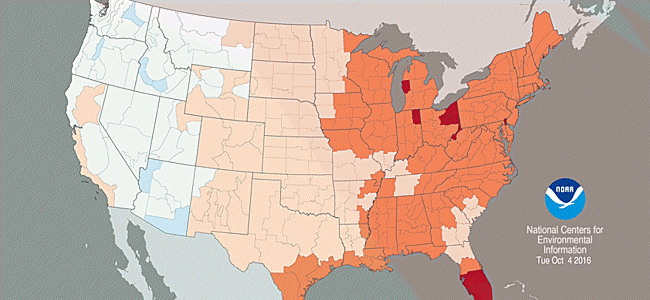-

The Packer noted this week that Hurricane Matthew damaged crops in some parts of the Southeast while leaving others relatively untouched. Florida crops were not significantly affected by the storm winds, which were lower than expected due to the center of the storm remaining offshore. Georgia crops also escaped the worst damage, although six inches…
-

The National Ocean Service has provided a comprehensive archive of pictures of the coastline after the passage of Hurricane Matthew through the area. You can read about the database at https://oceanservice.noaa.gov/news/oct16/hurricane-matthew.html and access the full list of pictures from there.
-

Among the impacts that Hurricane Matthew had on the Southeast coast were some impacts that the surge had on historical sites in the area. There are a number of forts in the area, many of them along the coast or just inland along rivers that were also affected by rising storm surges. Here are a…
-

The State Climate Office of North Carolina put out a report this morning summarizing some of the impacts of Hurricane Matthew on North Carolina. You can read it at https://climate.ncsu.edu/climateblog?id=215&h=37a460a0.
Posted in: Tropical weather -

Just in time for the Hurricane Matthew floods, CoCoRaHS announces that they have transitioned their Drought Impact Reporter to a Condition Monitoring reporter. Now you can report both drought and flood conditions at your location. You might wonder who uses these reports. Well, they provide valuable information to the folks who are producing the Drought…
-

NOAA reported last week that this past September was the 9th warmest on record. For southern Florida, it was the warmest on record. For the year to date, it was the second warmest on record, second only to 2012. You can read more in their monthly climate summary at https://www.ncdc.noaa.gov/sotc/summary-info/national/201609.
Posted in: Climate summaries -

Did you know that you can use cricket and katydid chirps to estimate the temperature? Dolbear’s Law is the formula from the late 19th century that can be used to accurately estimate the temperature based on the number of chirps a cricket emits. Basically, crickets chirp faster when it is warm than when it is…